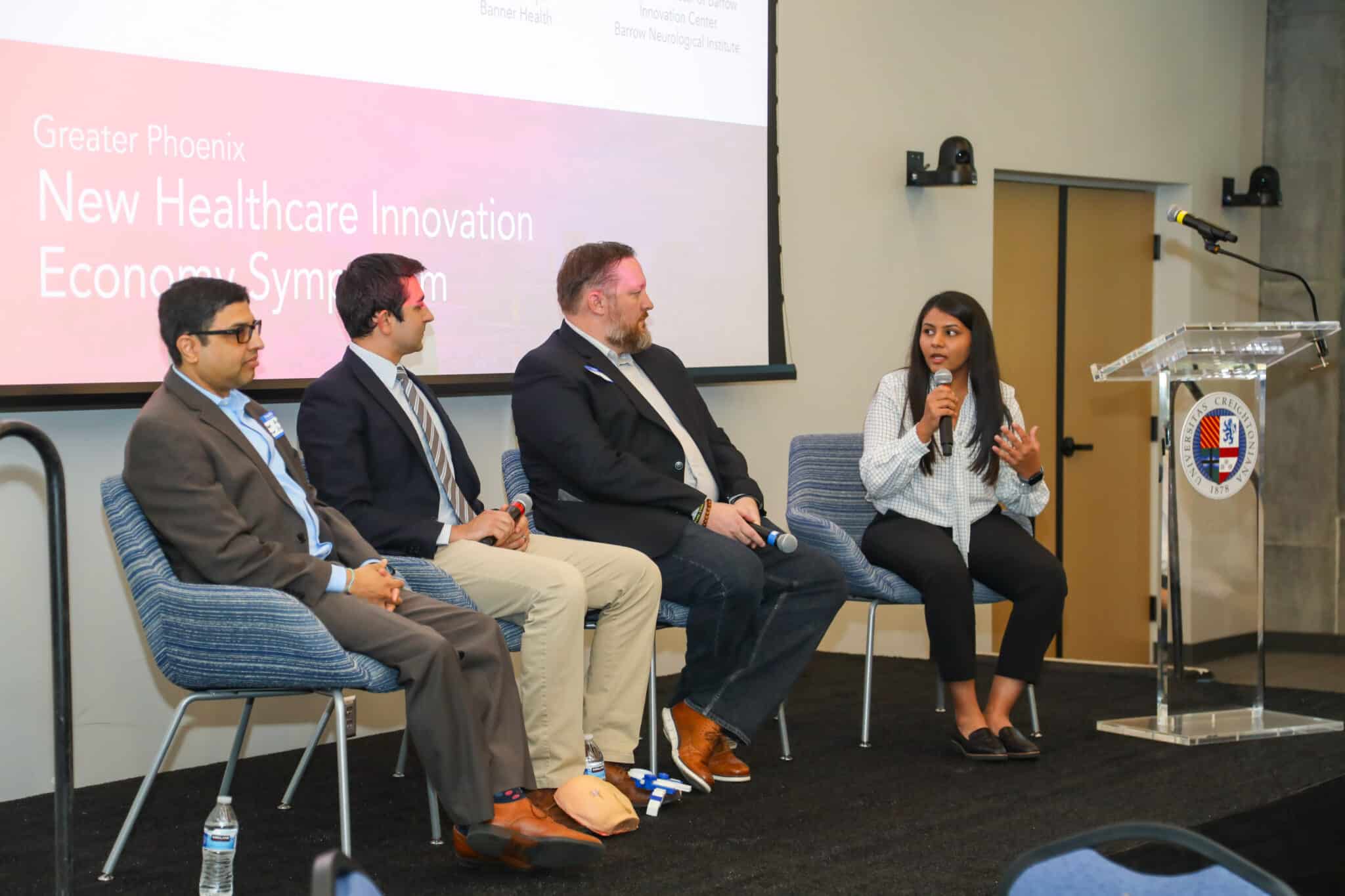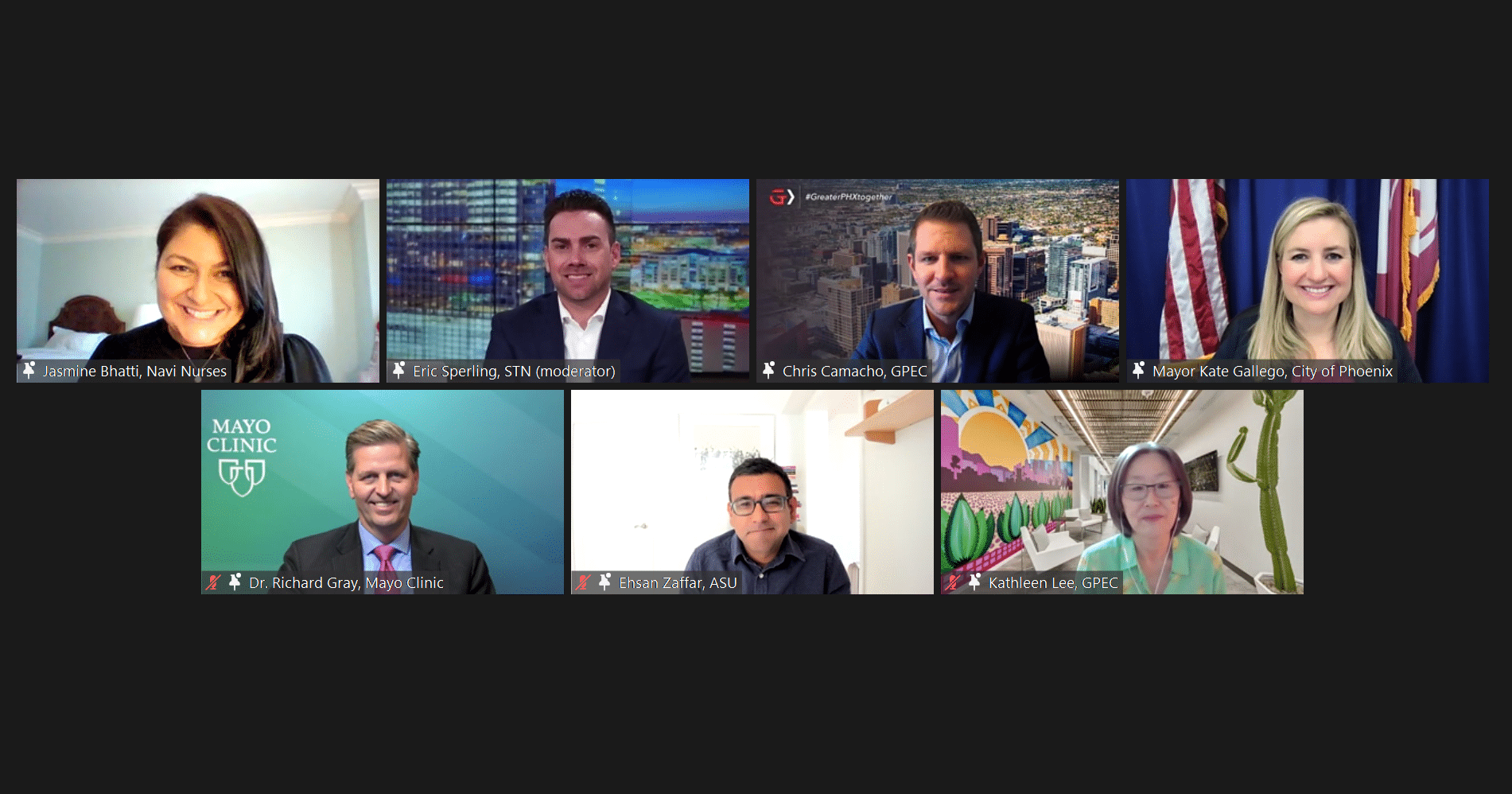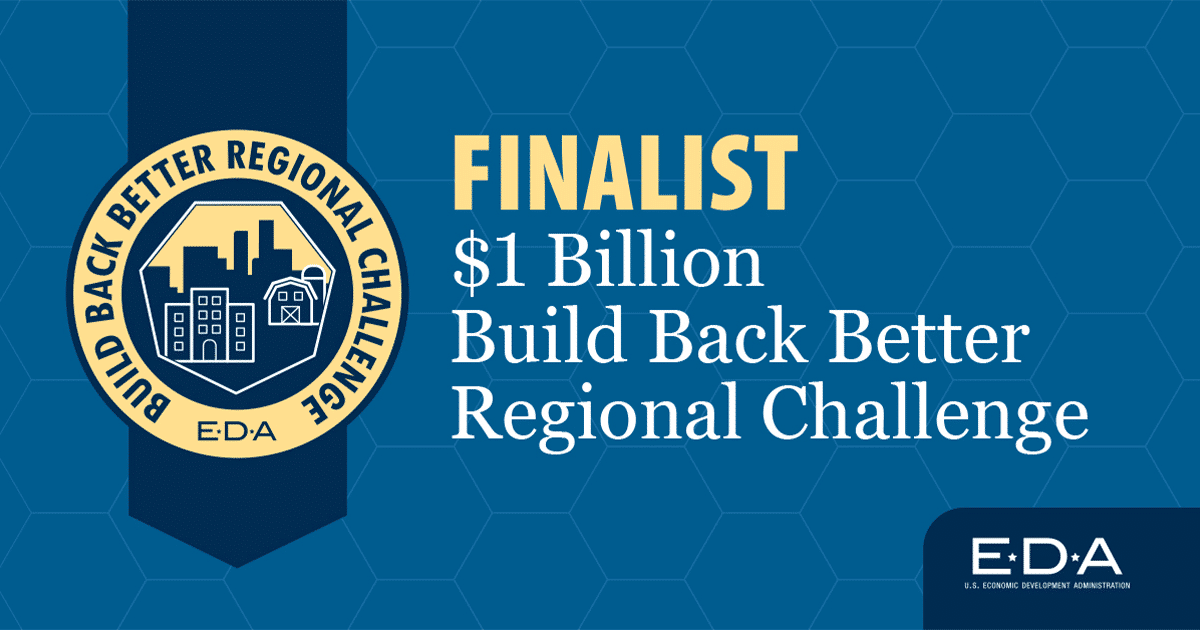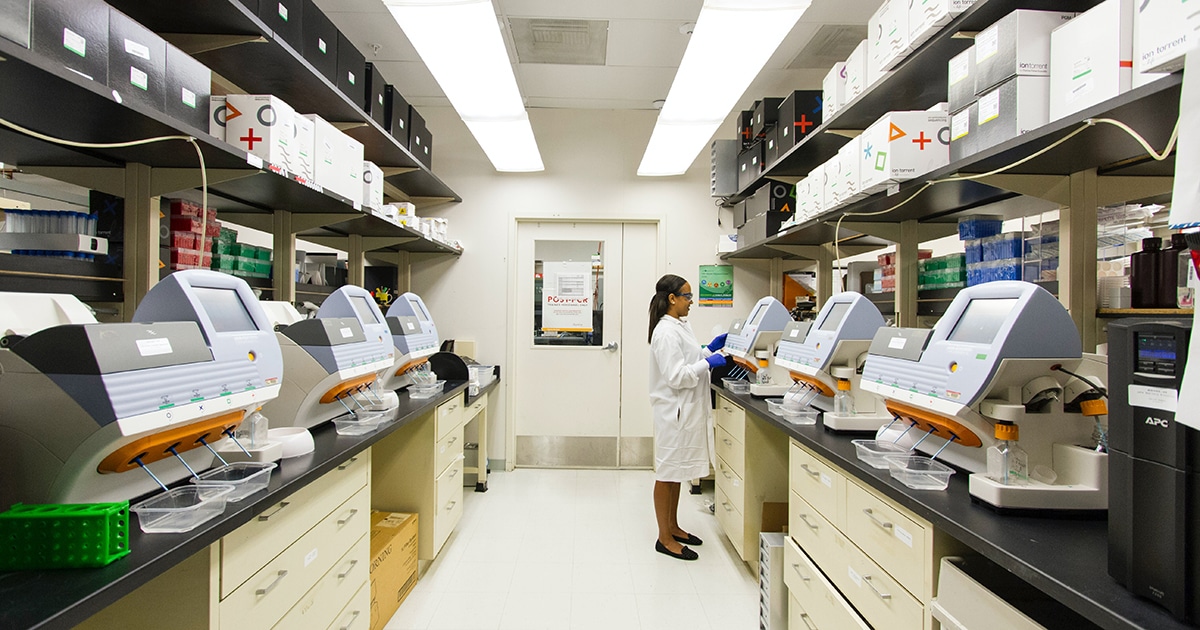

The Future of Healthcare Innovation in Greater Phoenix
Published: 10/19/2023
Updated: 04/16/2024
Leaders convened to share progress and drive collaboration within region’s bioscience industry
The bioscience ecosystem of Greater Phoenix is at an inflection point with recent designations of new industry hubs, such as Phoenix Bioscience Core and Mayo Discovery Oasis, highlighting the region’s concentration of talent, pro-innovation environment and central location.
In response to the U.S. Economic Development Administration’s Build Back Better Regional Challenge (BBBRC), the Greater Phoenix Economic Council (GPEC) formed a coalition of 18 organizations, nonprofits, and educational institutions from across the region’s healthcare and technology ecosystems. The group put forth a competitive proposal to drive growth through the advancement of a healthcare innovation economy and in 2021 received a $500,000 award as a finalist of the challenge.
“The concept of Arizona adding healthcare innovation as an economic driver is no longer just as an idea ... it's happening and the momentum is building,” said Co-Founder and Chief Clinical Officer of WebPT, Dr. Heidi Jannenga.
Recently, the coalition brought together more than 200 key industry players at the Creighton University Health Sciences Campus in the Phoenix Medical Quarter for the New Healthcare Innovation Economy Symposium. There, leaders in bioscience research and development (R&D), tech, funding and education shared insight on how to activate cross-sector collaborations, support innovative research, grow the workforce and create equitable opportunities.
Building Equity and Innovation
Greater Phoenix has undergone a tremendous transformation that has reshaped the blueprint for the market’s healthcare economy. Access and equity are pivotal to drive effective growth, two keynote speakers said.
“If we as an entire healthcare community are really going to become the national inspiration … it has to be an inclusive environment,” said Justin Bayless, president of The Journey Venture Studio.
That mentality is at the crux of the nonprofit’s mission to increase underrepresented entrepreneurs’ odds of success. Founders in the program are given financial and programmatic support to build their novel healthcare prototypes in Phoenix and are backed by leadership coaching, mental health support, mentorship and the organization’s entrepreneurial playbook.
Seizing opportunities in the field must be in tandem with opening our eyes to creating a more inclusive environment. “We have the opportunity to solve healthcare disparities by bringing diverse entrepreneurs into the ecosystem,” Bayless said. “The further up you go in healthcare … the diversity becomes less and less apparent.
Carmen Heredia, CEO and executive deputy director of the Arizona Health Care Cost Containment System (AHCCCS), the state’s Medicaid and Children's Health Insurance Program (CHIP) Program, stressed the need for technological innovation to drive the region’s success. “Things like new sensor technologies that can help patients get out of the hospital sooner, that monitor chronic illnesses and minimize emergency room visits — we need to use these technologies to predict health challenges, intervene early and mitigate the onset of debilitating situations,” she said.
As AHCCCS supports more than 2.5 million Arizona residents, Heredia also emphasized the need to expand the state’s healthcare workforce. “Our universities must be training and retaining more physicians to stay here in Arizona,” she said. “Prioritizing healthcare workforce development is critical for Arizona. We know that the demand for healthcare is at an all-time high, and likely to keep growing.”
Universities Shaping the Future of Healthcare
The symposium’s first panel brought together key university leaders to discuss how fostering talent and research impacts the industry’s progress. The conversation, moderated by Phoenix Bioscience Core Executive Director Scarlett Spring, emphasized individual support and alignment of resources to produce impactful results.
Dr. Lillian Smith, dean of the College of Health and Human Services at Northern Arizona University (NAU), said NAU is focused on creating an ecosystem of opportunity through higher education. “We’re working with our industry partners … and helping to align people to navigate through the system so [they can] get to fulfilling careers.”
Arizona State University is integrating entrepreneurial thinking into its curriculum to create translational results, shared Tracey Dodenhoff, vice president of Entrepreneurship and Innovation. “There is this rich opportunity to translate from the back of the napkin or observations that you have at the bedside into actual practice and into innovations that can actually impact the healthcare industry and help address a lot of the health disparities that we see.”
Cutting-edge research is a major key in positioning Arizona as a bioscience leader. Dr. Kenneth S. Knox, associate dean of faculty affairs and career development at the University of Arizona College of Medicine, discussed the progress of the Center for Advanced Molecular and Immunological Therapies (CAMI). The center will focus on research in cancer, autoimmunity and infectious disease, with Knox adding, “The whole premise of CAMI is that we can unlock our immune system to take care of some of these diseases, and that’s the most efficient way we can do it.”
When asked how bioscience leaders can best support the growth of R&D in the region, he said, “We need to lobby and advocate at every turn. Just as resources flow, they get turned off. And when that happens, it takes twice as long to recover.”
Taking Ideas from Lab to Market
Institutional innovation systems in Greater Phoenix are creating models to bring ideas to life. Whether it’s working with entrepreneurs, startups or directly with physicians, three leaders shared their approach to bettering the industry in a panel led by Ayushi Patel, co-founder of CenSyn.
“There are so many things in healthcare that we're doing using 80s technology. And it's not that we don't think of ways to fix them, but we're so busy, our bandwidth is so narrow,” said Dr. Baltazar Zavala, resident at Barrow Neurological Institute and director of the Barrow Innovation Center. “[We] exist to help the neurosurgery residents actually develop products and take our ideas that we have in the operating room and implement them into something that's tangible and real.”
HonorHealth’s Chief Innovation Officer, Dr. Kiran Avancha, said the organization has made about 16 investments and has about 260 more opportunities under consideration. "Each one of these is going to solve a specific issue or problem within our health system — but at the same time, it has a multiplier effect,” he said. “It’s not just solving here, but has the opportunity to solve across.”
Steve Lindsey, director of innovation partnerships at Banner Health, emphasized how collaboration between innovation hubs and entrepreneurs maximizes ideas. This broadens access to potential partners that can provide services where others can’t. "[We] share some of those opportunities across the channels, across the verticals.”
The panel also reflected on the growth of Greater Phoenix’s supportive healthcare ecosystem. Patel’s CenSyn, a handheld EEG monitoring device, relocated to Arizona when she recognized the market’s density of health systems and the strategic support that comes with it. “That early-stage support meant everything to us as we take our company from the seed stage to growth stage and set up contract manufacturing in Arizona, so we could not be more excited to be a part of the Phoenix ecosystem.”
“Arizona and Phoenix seem to be kind of bucking the trend,” said Lindsey. “We’re seeing investments dropping across the county and healthcare space. Arizona just seems to be going, ‘Sure, let’s go. Let’s try it.’ Maybe that’s a little bit of just the Wild West mentality that Arizona has had since the inception of the state … or maybe there’s something else there … but I think there’s definitely activity and growth and momentum that seems to be growing here.”


